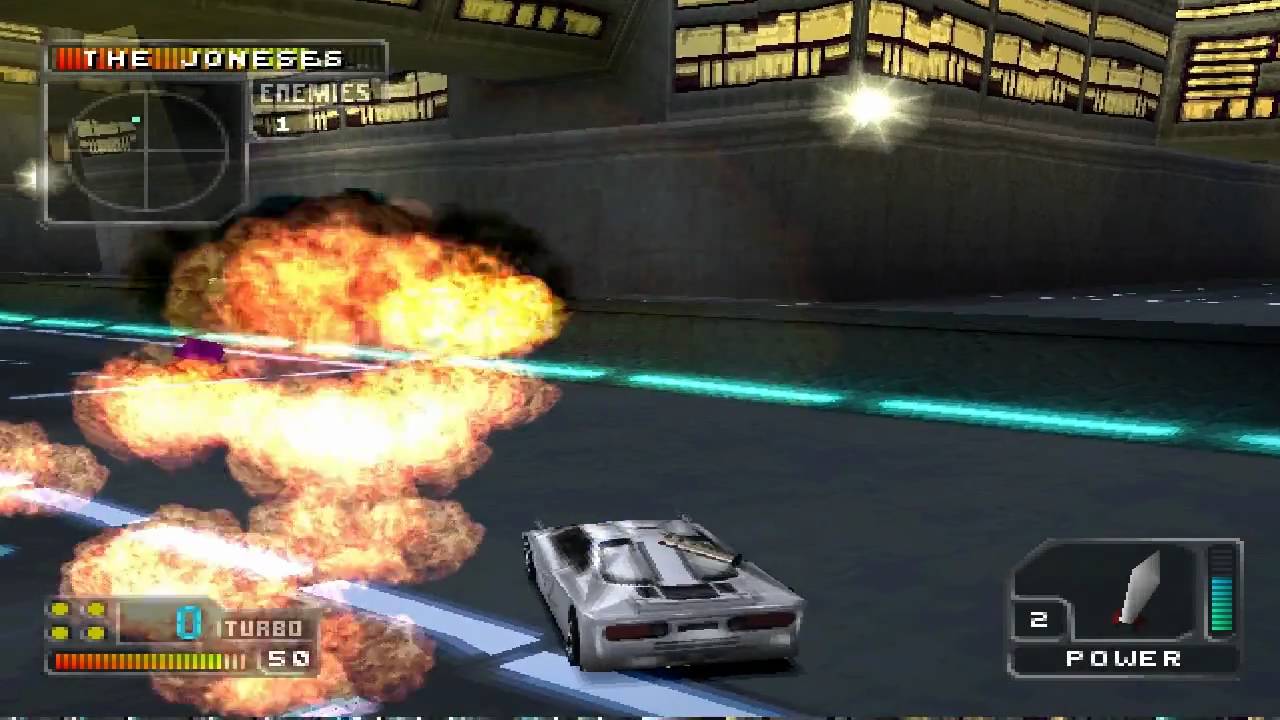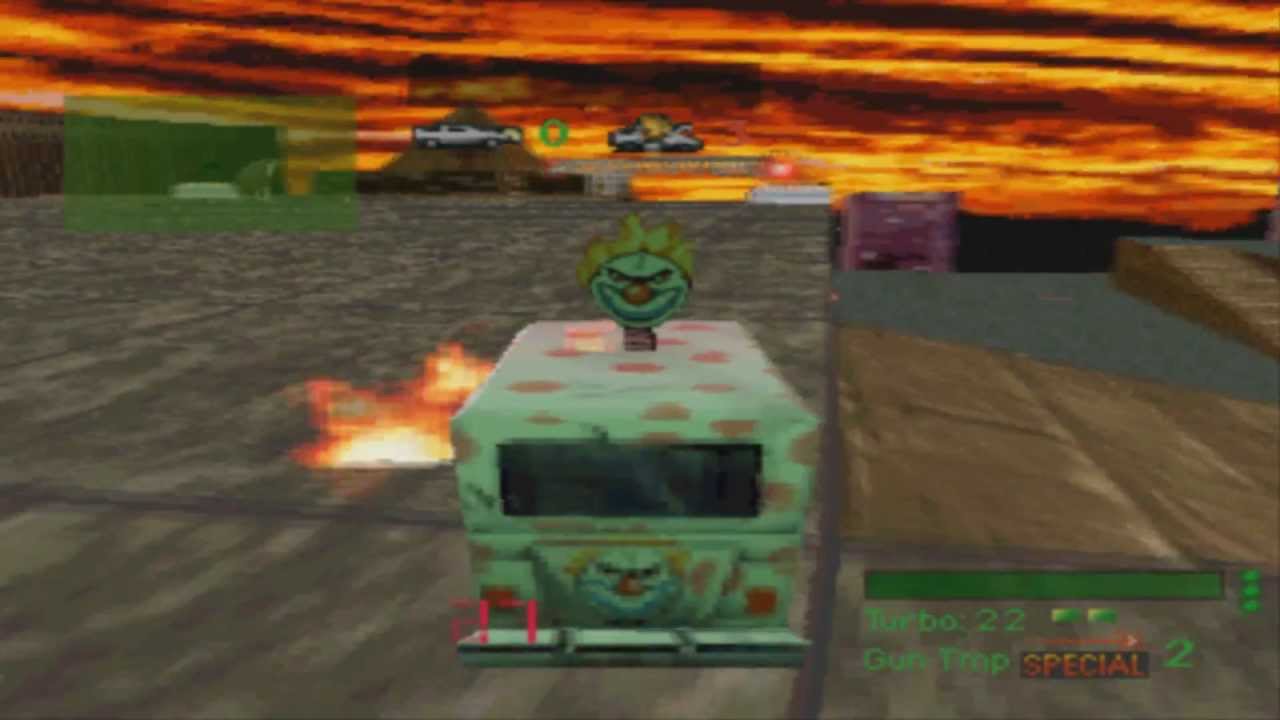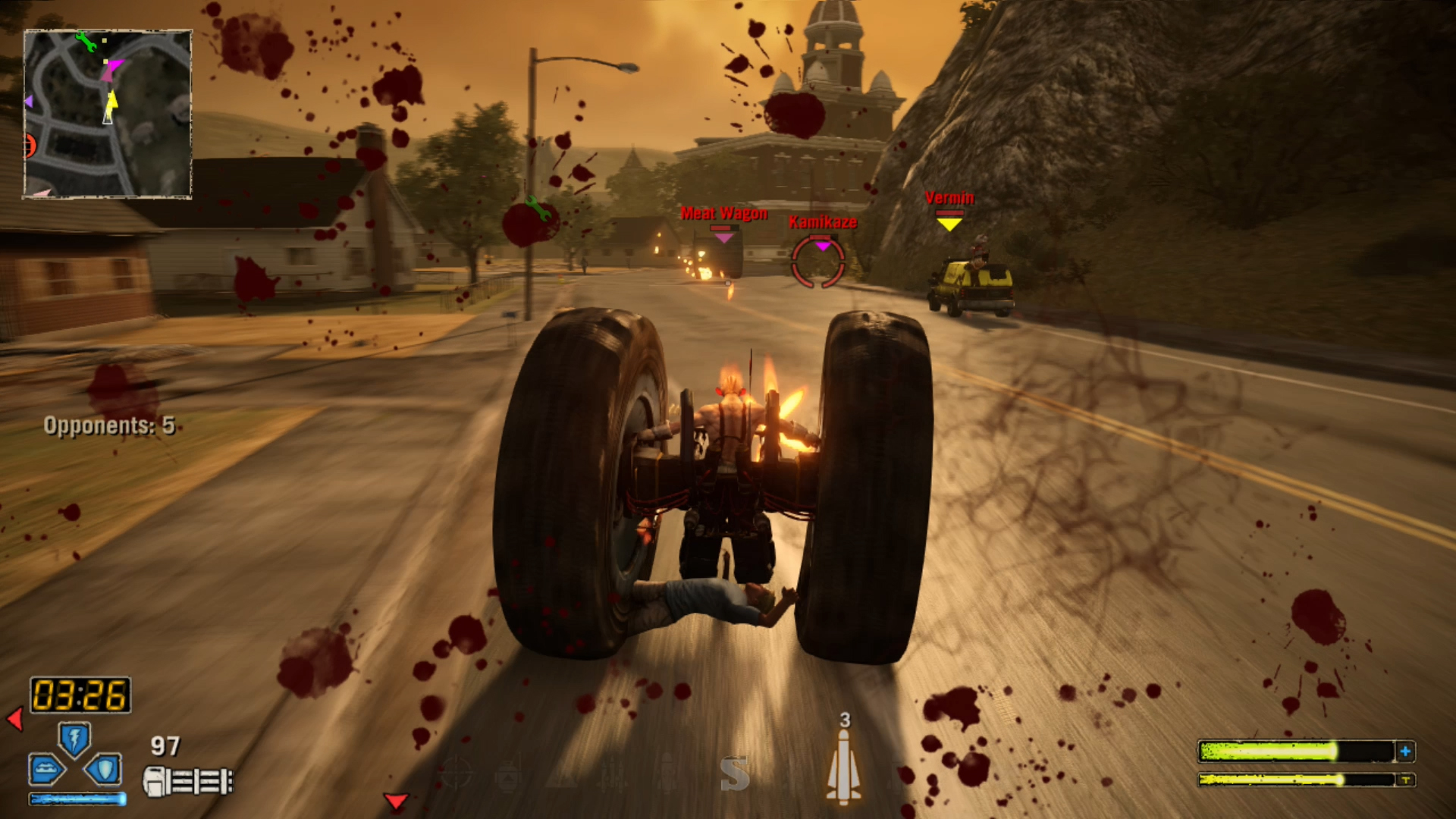
For those who grew up during the time of the first PlayStation, Twisted Metal was a franchise that very much captured the spirit of the times. It was both edgy and cartoonish, represented of the “cool” 90’s feeling that overlapped with cultural youth trends for boys such as the rise of skateboarding and the Tony Hawk’s Pro Skater series. But while the Tony Hawk’s Pro Skater series was meant to allow players to skateboard in a way that just further away from reality enough to be fantastic and fun, Twisted Metal is for the the types of kids who liked to build things and then break them – those who like to see destruction. Those who were fans of explosions, building large LEGO structures and then breaking them down, and competitive destruction derby action will be able to relate. During the time that it was active, Twisted Metal had a lot to offer.
But first, a brief overview. Twisted Metal is a franchise built on the idea of destruction derby – a variety of crazily-designed vehicles duking it out against each other with a variety of weapons. These vehicles engage each other in arenas, and the last vehicle standing without their lives run out is the winner, and each life lasts as long as a health bar isn’t depleted, with health bars decreasing in length according to contact with weapons and hazards. Twisted Metal, within the Twisted Metal game universe itself, is the name of a destruction derby competition – wherein participants battle it out with the goal of having any wish granted to them.
The Twisted Metal franchise began with the first game – Twisted Metal, releasing for PlayStation in 1995 in North America and Europe, and for Japan in 1996. It features a single-player scenario campaign, wherein players progress through six arenas and a final boss, or a multiplayer mode for two players. The idea for Twisted Metal actually arose from the would-be developers being stuck in a traffic jam, imagining using weapons against other cars. When the developers first pitched the idea of a destruction derby game, it was almost transformed into a pizza delivery simulator – a stark deviation from the original concept. SingleTrac, the developers of the first and second games, would form in 1994, and would be tasked by Sony with finishing two games – the first Twisted Metal, and WarHawk – in less than a year. The work was hard, the hours long, and the pressure intense, but the developers stuck to their tasks. The first Twisted Metal game didn’t actually review that well – while the gameplay was acknowledged to be fun, the graphics were notably underwhelming. Additionally, the story mode can be completed very quickly, which might raise concerns about replay value…unless you play the game with a friend. The game was a commercial success, selling more than one million copies just in North America.
Such was the success of the game that a sequel would follow – Twisted Metal II. The plot is essentially the same – a new Twisted Metal tournament is held, and a cast of colorful characters compete for the fulfillment of a wish. The gameplay – the defining feature of the series, and what makes it stand out so many – maintains the character established from the first title The content on offer within the game was widely agreed to be an improvement, with more and bigger maps with diversified locations based on different parts of the world (rather than only in Los Angeles, as with the first game,) more characters, and more weapons, but the graphics were again a negative point for this game. And when viewing media of the title, it’s ultimately hard not to think that the graphics are very dated or generally underwhelming – flat textures, limited attention to detail, lots of obvious pixels – but nonetheless, when the game is fun to play, that can’t be changed. And the simple game concept was once again able to win people over.
After Twisted Metal II, development duties shifted from SingleTrac to 989 Studios, one of Sony’s own development teams. SingleTrac made their own game engine for the first two Twisted Metal games, and so a new one had to be made for Twisted Metal III. The new physics has its pluses and minuses – while making sharper turns is easier in this game, it is now possible for your vehicle to flip over, and for those that are driving quickly often, you can expect that this is more likely to happen to you. Multiplayer now has an option for four-player play through the Deathmatch mode. Nevertheless, this game was another strong seller for the franchise, despite the markedly lower critical average in comparison to the second game.
Following Twisted Metal III is Twisted Metal 4, releasing in 1999 but only for North America, with Europe receiving no release as was the case with Twisted Metal III. Notably, this is the first and only game in which players can create their own vehicles. While the Twisted Metal franchise is known for the car carnage, the more you watch of it, the more that particular characters will become familiar to you, and this is what will make 4 stand out, because the majority of the playable cast are new characters, and these same newly-introduced characters aren’t seen in another Twisted Metal game. Critical reception to the game was mixed at best, with controls and physics, along with an underwhelming soundtrack, being negative points. While the game automatically rights your vehicle if you flip over, there are still other issues with control, such as with landing on platforms.
Next in the Twisted Metal franchise is Twisted Metal: Black, releasing in 2001 for the PlayStation 2. While this title would also see release in Europe, most all of the cutscenes were removed. This is notable because it means the erasure of the characters’s stories, but the European version would also see changes in the form of edited text and the erasure of drivers running away from flaming vehicles upon their vehicle’s destruction, among other changs. Most of the characters here are returning characters, though their appearances have changed. The scenario campaign is also such that while most levels are set, the second, third, and sixth levels are such that you choose between two different stages. In general, the tone of Black is darker compared to the previous games, with the story being that Calypso has released many of the drivers from a mental institution. Compared to the previous two installments, Black was both a critical and a commercial success. Sony would also release Twisted Metal: Black Online, which contained only the online multiplayer for the game, later, by having players mail in a card that came bundled with PS2 network adapters.
Directly following Twisted Metal: Black is Twisted Metal: Small Brawl, releasing for the PlayStation in 2001, and only for North America. At one point titled Twisted Metal: Kids, the game is oriented towards children, and features remote-controlled toy cars instead of the usual larger vehicles. Most of the characters in this game are franchise veterans, though much younger-looking, and the story reflects the cast being children who are participating in a neighborhood RC car tournament. Small Brawl originally started out as a PS2 title, but such plans were later dropped by Incognito. Reviews for the game were mostly negative, with no real positive standout features.
Next, Incognito would work on Twisted Metal Head On, a PSP title releasing in 2005. It ignores the events of the third and fourth game in the franchise, and within the franchise mythology follows the second title directly. Stages are placed all around the world, and the roster is comprised of all of the characters from the second game, with the exception of a boss character. The critical average for the game fared much better than Small Brawl – the game hit a aesthetic sweetspot by maintaining the spirit of the classic Twisted Metal games while also employing a good attention to detail, and the action is as involving as it has always been.but the controls and physics may leave some wanting. Eat Sleep Play, a development studio formed by David Jaffe (who has worked on the Twisted Metal series since the first title,) would later develop a PS2 variant in 2008, named the Extra Twisted Edition, but releasing only in North America, and without online play. Aside from including the content from the PSP release, Extra Twisted features a new map, and a Sweet Tour mode that allows players to browse through concept art and developer notes.
Eat Sleep Play would also be responsible for working on what is currently the last title in the Twisted Metal franchise – Twisted Metal 2012. Plans for Twisted Metal 2012 were set by the time of Extra Twisted, in which a hidden message revealed that a PS3 Twisted Metal game would be would be worked on. 2012 is meant to be a reboot for the series, and features a story mode of an entirely different type than what we’re used to – it follows three different characters only, rather than a larger cast, with vehicles split amongst four factions. When this newest Twisted Metal title finally released, it would enjoy moderately favorable critical reception on the whole – while the online play modes were lauded, the stark drop off in playable character count felt like a sore spot after the franchise had featured more than a dozen playable characters for most of its life, and this is particularly noticeable in the scenario campaign.
And that concludes this feature on the Twisted Metal series. The franchise has been host to a handful of cancelled games since. In addition, there was at one point a Twisted Metal movie planned, with Sony enlisting director Brian Taylor for the movie and publicly announcing the project back in 2012, but it was ultimately canned. Reasons for the cancellation largely stem from the underwhelming performance of Twisted Metal 2012 – after that game, Sony was convinced that there wasn’t a large enough fanbase for a Twisted Metal movie, and that in order to do the concept of Twisted Metal justice (namely, for all the explosions and various instances of destruction, among other things) more money would be required than they could reasonably assign to.
Additionally, at a 2010 San Diego Comic Con panel, David Jaffe revealed artwork for two new Twisted Metal games that never saw the light of day – the first being Twisted Metal: Apocalypse, with stages that feature all sorts of dilapidated settings, such as a ruined Mount Rushmore. The other game was Twisted Metal: Revolution, a much more realistic and grounded Twisted Metal, featuring characters such as gang members and FBI operatives, and compared to the Midnight Club games from Rockstar by Jaffe. Sweet Tooth makes an appearance in PlayStation All-Stars Battle Royale as a playable character, representing Twisted Metal. That aside, while things have been quite for the franchise for several years, Sony confirmed earlier this year that they are working on a Twisted Metal TV series, though divulging few details at the time.
Jaffe himself has said, in a statement that dates prior to the announcement of the TV series, that he would be surprised if Sony returned to the franchise to make new media, as he believes that it would take a lot of money to reposition the franchise into something for today’s gaming audience. With the announcement of the TV series, maybe this is an indication that there could be more ahead for Twisted Metal, if at least in the form of Sony signalling belief in potential for the franchise. Do you see yourself watching the Twisted Metal TV series? Do you think that a new game would not sell easily in today’s gaming landscape? If so, what more needs to be done to help the franchise “evolve” – is it a question of gameplay, a problem of aesthetics, or something else entirely?

















